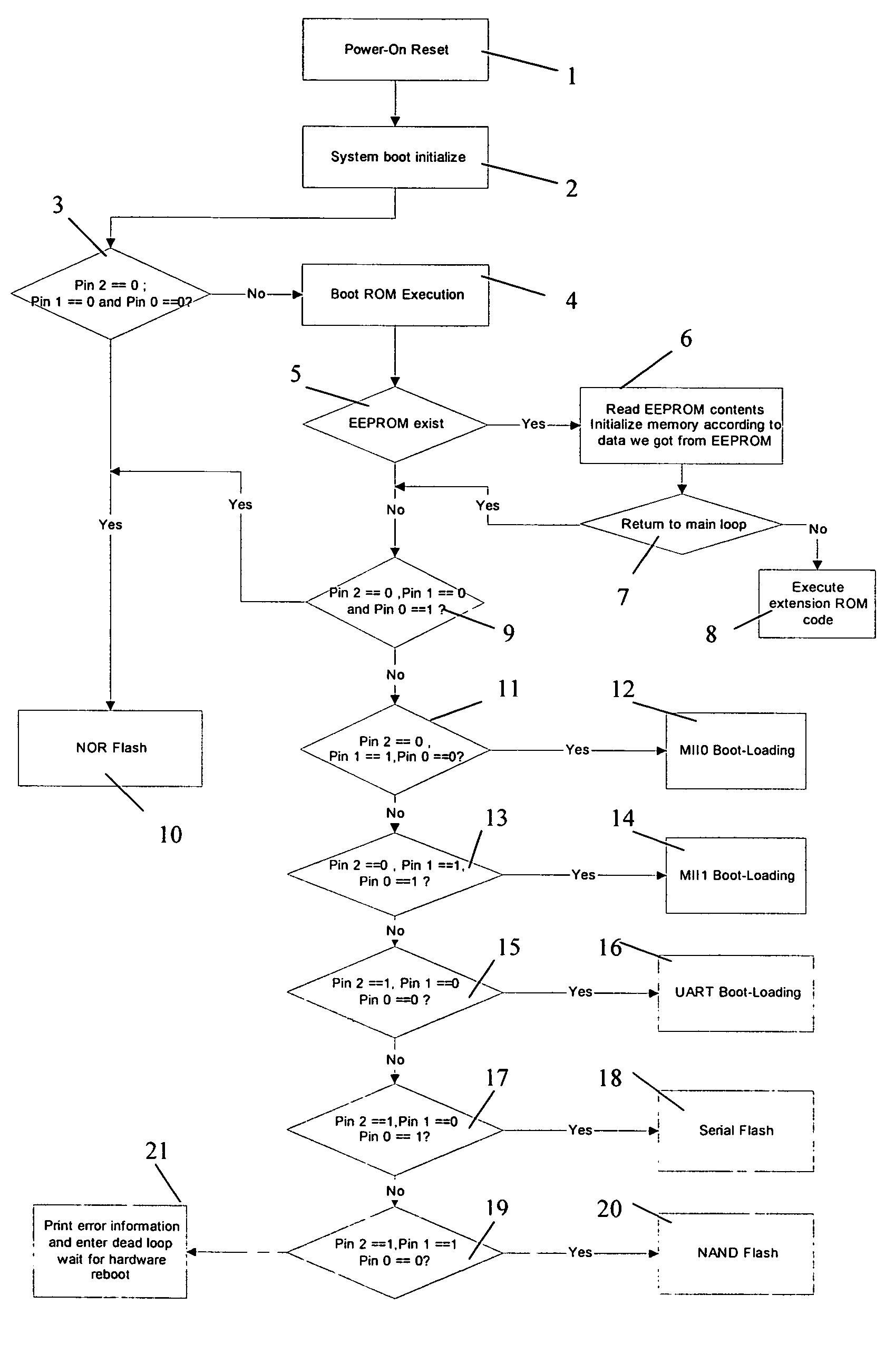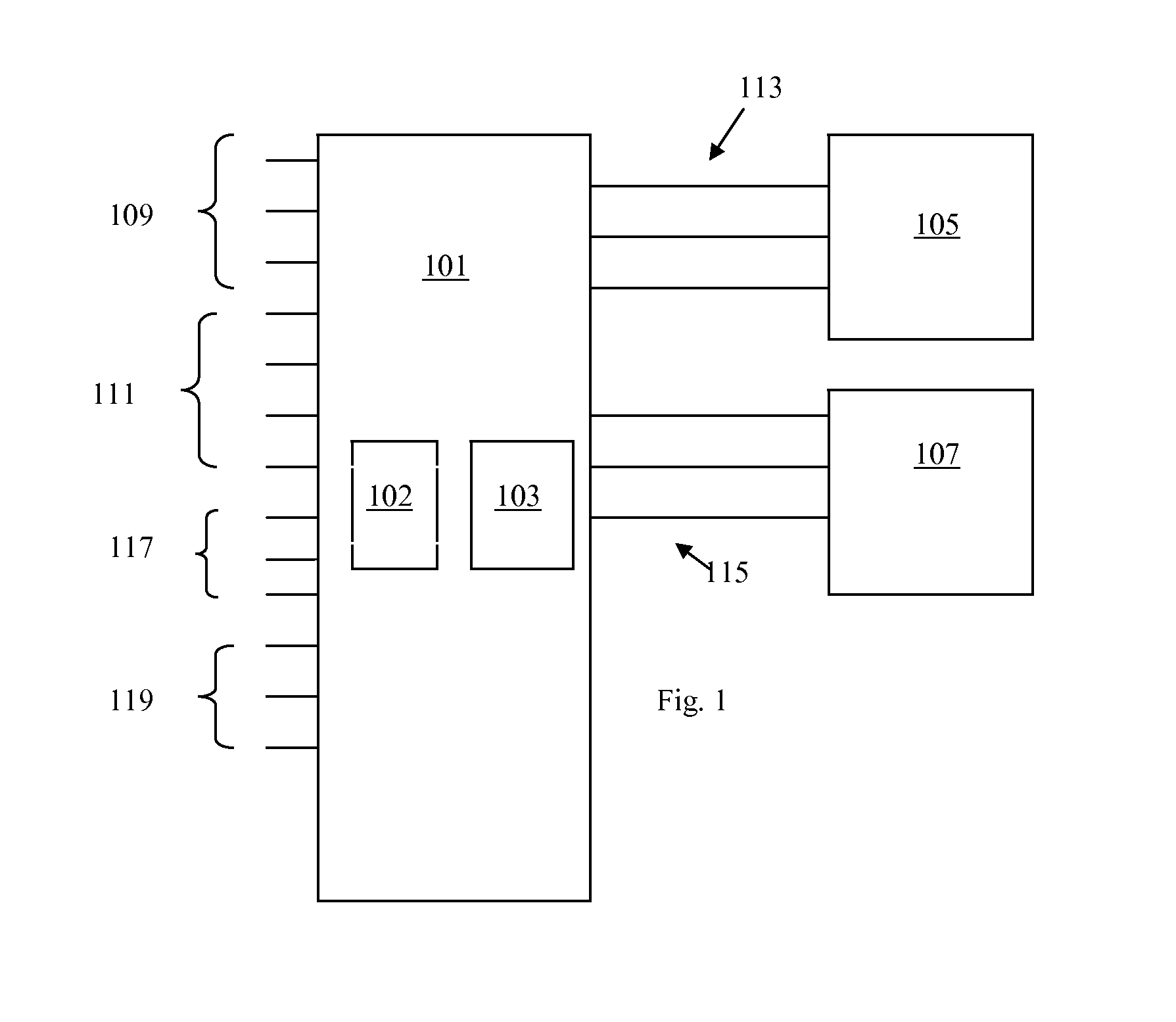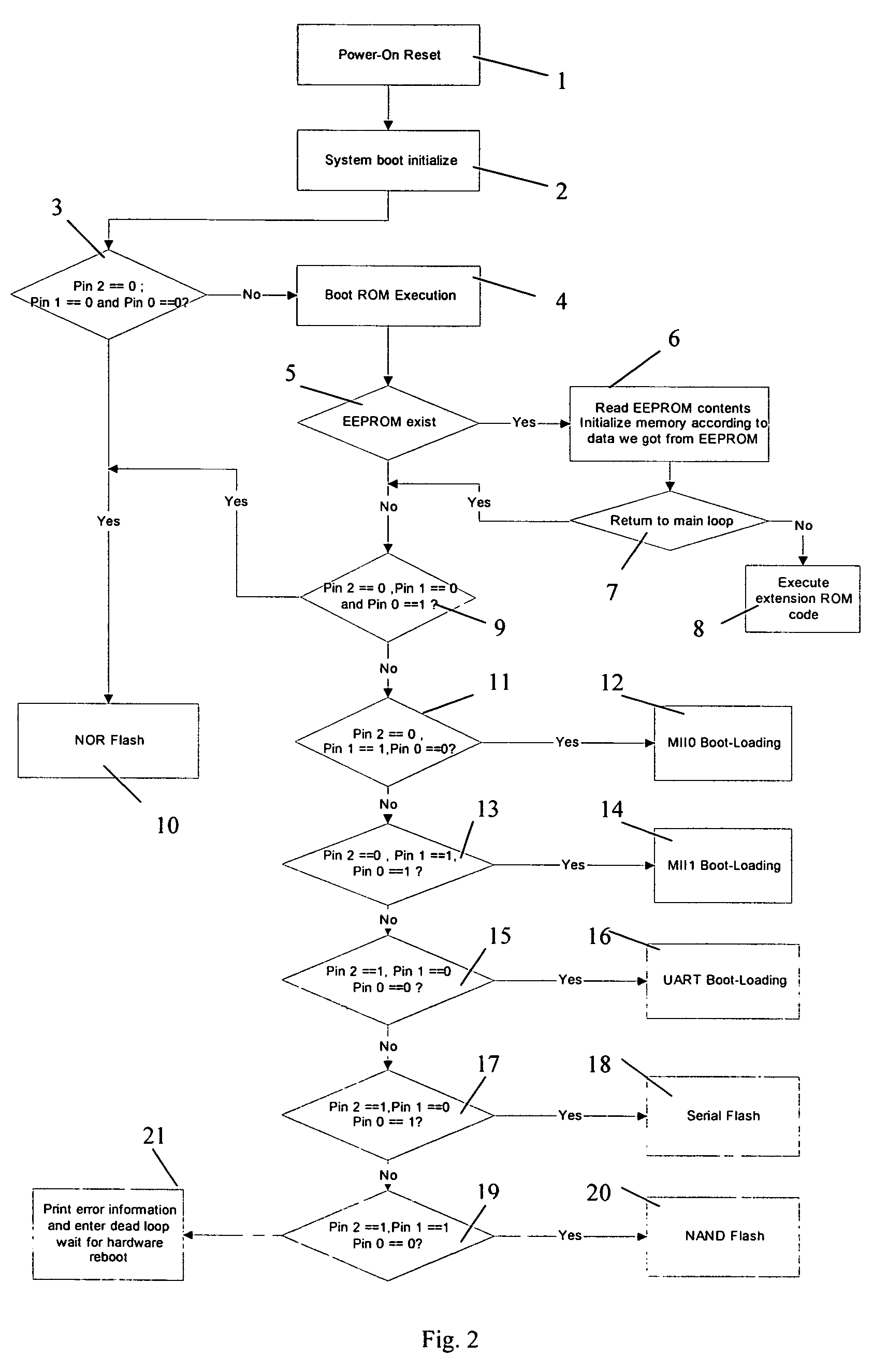Method and system for booting a software package on a network processor
a network processor and software technology, applied in the field of network processor devices, can solve the problems of increasing the footprint of the network processor and increasing its cost, and achieve the effect of maximum design freedom
- Summary
- Abstract
- Description
- Claims
- Application Information
AI Technical Summary
Benefits of technology
Problems solved by technology
Method used
Image
Examples
Embodiment Construction
[0032]Referring to FIG. 1, a network processor system, which is an embodiment of the present invention, is illustrated schematically and includes a network processor 101. The network processor 101 includes a ROM memory 102, which stores ROM code by which the boot-up is performed, thereby loading a software package into a RAM memory 103, which is typically an SDRAM. The network processor system further includes at least one first non-volatile data storage device 105, typically in the form of a flash memory.
[0033]The system further includes a second non-volatile data storage device 107, typically in the form of an SPI EEPROM. The EEPROM 107 stores an extension of the ROM memory, as discussed below in more detail.
[0034]The network processor 101 includes a number of interfaces relating to the boot-up, including two MII interfaces 109, 111 which are suitable for communication respectively with Mil buses, of the kind used for transmitting Ethernet communication. These two interfaces 109, ...
PUM
 Login to View More
Login to View More Abstract
Description
Claims
Application Information
 Login to View More
Login to View More - R&D
- Intellectual Property
- Life Sciences
- Materials
- Tech Scout
- Unparalleled Data Quality
- Higher Quality Content
- 60% Fewer Hallucinations
Browse by: Latest US Patents, China's latest patents, Technical Efficacy Thesaurus, Application Domain, Technology Topic, Popular Technical Reports.
© 2025 PatSnap. All rights reserved.Legal|Privacy policy|Modern Slavery Act Transparency Statement|Sitemap|About US| Contact US: help@patsnap.com



